As floating, self-contained, mini cities, cruise ships operate in unique environments, where sustainability concerns are front and centre. Greenhouse gas emissions, water quality and sewage treatment are key areas that the industry is actively addressing.
Disney is leading the way in tackling these challenges with a programme of innovation and research. It also has a company-wide commitment to reach near net zero by 2030.
Disney Cruise Line
Disney Cruise Line ( DCL ) launched in 1998. It currently has a fleet of five ships — the Disney Magic, Disney Wonder, Disney Dream, Disney Fantasy and Disney Wish. There are also three more ships planned.
DCL's fleet's destinations include The Bahamas, the Caribbean, Europe, Alaska, Mexico, Canada, and Hawaii, as well as the South Pacific, Australia and New Zealand. Disney has also developed its own island destinations in the Bahamas, Disney Castaway Cay and, opening in summer 2024, a destination in Eleuthera at Lighthouse Point.
Working to make a more sustainable Disney cruise
Blooloop speaks to Barry Compagnoni, Disney Cruise Line’s vice president for safety, security and environmental policy and compliance. He explains more about the work award winning DCL is doing to minimize its impact on the environment, while promoting conservation and sustainability.
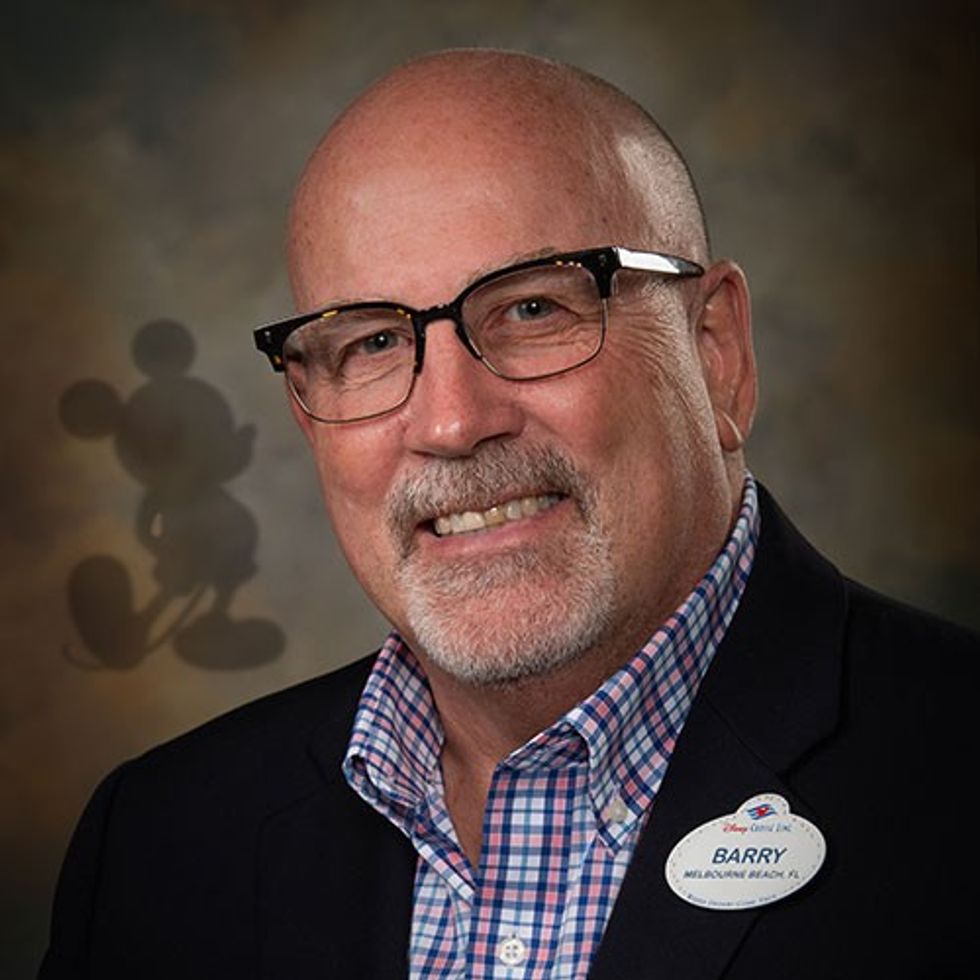
Compagnoni spent 27 years with the US Coastguard, including postings in Beijing and Hawaii. Reflecting on his experience he says:
"One of the core missions that's related to this work is environmental stewardship and enforcing environmental regulations throughout the shipping industry. That has really helped me not only shape and understand what we're doing at Disney Cruise Line but also inform some of the strategies of where we need to go for the future."
Disney's environmental goals
In December 2022 The Walt Disney Company released its 2030 Environmental Goals White Paper. This set out the first estimate of the group's Scope 1, 2 AND 3 emissions.
Disney has committed to achieving net zero emissions for direct operations by 2030. It will also reduce Scope 3 emissions in line with a ‘well below 2°C’ scenario by 2030. These ambitious reduction targets will require Disney sustainability teams to work together across the company.
Working together
Regarding the cruise line’s efforts, Compagnoni says:
"On the Scope 3 emissions, we're early in the process as we put together the strategy to achieve the 2030 environmental goals for the company. We're working out the details at this point. We don't necessarily have all of the details. But Scope 3 is definitely part of our overall emissions reduction strategy and it's aligned with supporting the Company's goals.
"What we do from an organisational perspective is very closely tied with other environmental sustainability teams, both locally here in Florida, and across the company domestically and globally.
"We're always looking for opportunities to collaborate with others because we have a tremendous amount to learn."
The scale of the challenge for shipping means that DCL is even willing to look beyond the cruise industry for solutions in terms of the "really important work that needs to be done. And so, what we'll do is look at opportunities not only within the cruise industry, but outside of the shipping industry to include the entire environmental sustainability landscape."
LNG, green methanol and beyond
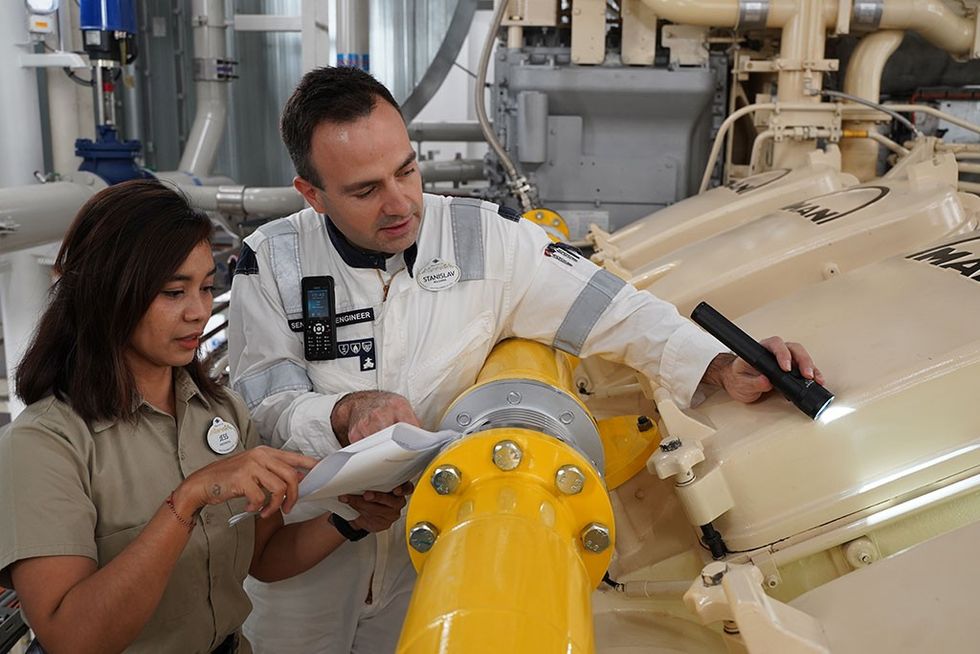
One of the biggest environmental opportunities for the cruise industry is in reducing greenhouse gas (GHG) emissions. The development of cleaner burning fuels is happening at a pace which makes the choice of fuel difficult for a long-term investment like a cruise ship.
In the near term, low sulphur fossil fuels can help to achieve significant reductions. But ultimately, emission free power is likely to come from solutions like hydrogen fuel cells.
The Disney Wish runs on low-emission liquefied natural gas (LNG). This eliminates nearly all harmful sulphur oxides (SOx) and particulate matter emissions. It also reduces the emission of nitrogen oxide (NOx) by around 37 percent. It reduces onboard carbon dioxide (CO2) emissions by around 20 percent, compared to traditional diesel or marine fuel.
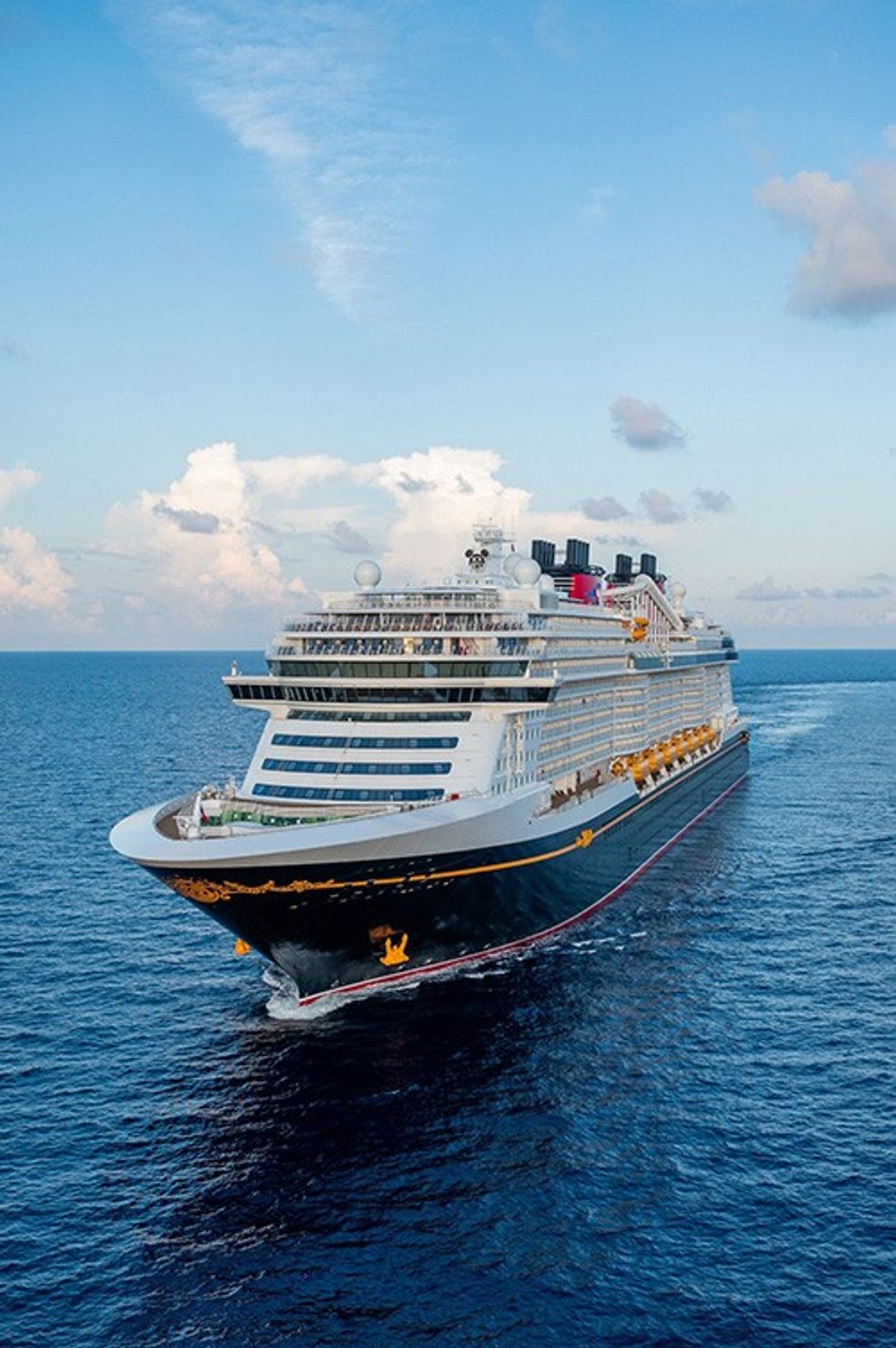
In 2020 the Magic and Dream classes of ships were retrofitted the fleet to run on ultra-low-sulphur fuel, exceeding international maritime regulations. Disney's newly acquired ship that will homeport from Singapore is planned to run on green methanol. Looking to the future, Disney is also exploring plans for a prototype fuel cell.
Fuel strategy
We asked Compagnoni about the challenges in developing a fuel strategy:
"Similar to the shipping industry, there's a lot of alternatives out there with respect to fuels. So like others in the cruise industry, we are trying to be flexible in our approach so we can determine exactly what's the right investment in the right fuel at the right time.
"That aligns with both the advancement of technology as well as the availability from the supply chain."
Energy efficiency

GHG emissions can be reduced by not only fuel choice but also by consuming less energy. The Disney Wish includes a number of environmental technologies making it 30 percent more fuel efficient:
- Excess heat from the engines warms the super-cooled LNG. It then recycles the cold energy to chill water for the ship’s air conditioning units
- The ship features a hydrodynamically designed hull and this also has a special coating. Both of these reduce drag through the water. This results in a fuel saving of 1,800 tons and reduces greenhouse gas emissions by 6 percent of fuel a year.
- Energy-efficient heating and air conditioning systems can adapt in real time to save energy
- The ship has an advanced energy saving wastewater treatment system
- 90 percent of all lighting onboard is LED. This reduces direct energy used by about 30 percent. It also lessens the need for cooling compared to traditional bulbs.
- A state-of-the-art energy management system tracks the ship's systems to ensure peak efficiency.
A "floating lab" to help develop more sustainable Disney cruise s
In a statement in 2022 announcing the launch of Disney Wish, Sharon Siskie, senior vice president and general manager of Disney Cruise Line, said:
“All of our Disney Cruise Line ships were built with some of the most advanced systems available at the time, and we continue to invest in our fleet by incorporating the latest technology that helps us minimize our impact on the environment. The Disney Wish serves as a floating lab that will help us discover how new innovations can be used throughout the rest of our fleet to help us meet our environmental goals.”
Reverse osmosis water production

Compagnoni says that the innovation lab characterisation is accurate, "especially for the Disney Wish with such a lot of new technology. LNG is the new fuel technology being used on the ship. But a lot of other systems as well.
"One of the areas that we're pleased to learn about is the reverse osmosis water production systems on the ship. It really exceeded our expectations. So that's one of the things we think about with the 2030 water goals for the company. What we want to do is eliminate the need to draw on municipal water sources as much as we can.
"Bringing in that new technology gives us an opportunity to improve the systems that we've got throughout the fleet, and what's the right technology to use as we move forward."
Lighthouse Point
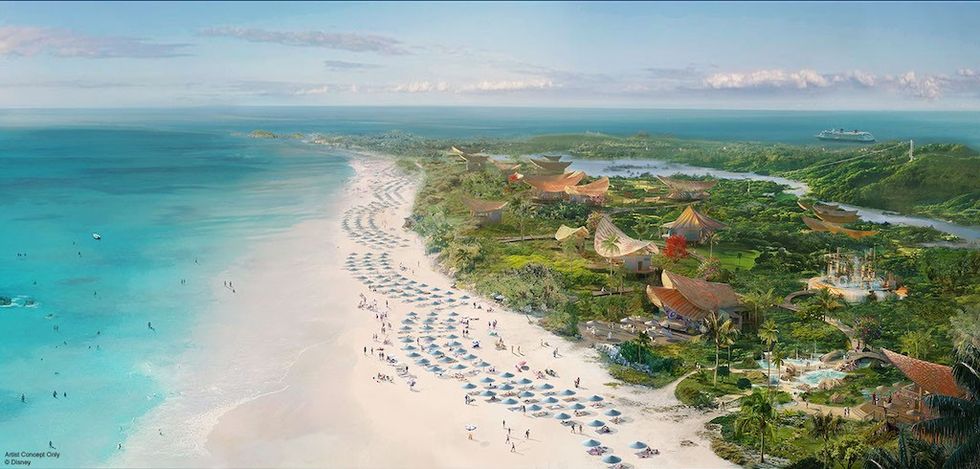
In April, greenloop attendees heard from Walt Disney Imagineering's Emily Dow and Caitlin Krasovic how Disney's second island destination in The Bahamas, located at Lighthouse Point, is being developed with sustainability embedded in the project.
90% of the resort's energy will be from solar. This, together with the battery storage strategy, will mean, says Dow, that Lighthouse Point "will definitely be on track for the near net zero goal".
Watch greenloop 23 on demand
hereOther sustainable development initiatives include restricting the resort to less than 16% of the site, leaving the rest for preservation and for the community. In addition, the pier's design avoids the need for dredging. Elevated walkways help limit the impact on the landscape.
On rolling out initiatives across the Disney Cruise Line, Compagnoni says:
"What we want to do is take some of the sustainability lessons that we have throughout the fleet and bring those to shore. And we also have great partners throughout the rest of The Walt Disney Company. They have a lot of sustainability initiatives, so we're able to learn and bring in some of those experiences as well.
"So, there's a lot to do as we cross over technology and lessons from both the ships to the islands as well as leveraging our relationship with the rest of the company."
DCL tries to reduce the environmental impact on destination ports, including turning off its ships’ engines to rely on a port’s shoreside electric grid when available. The cruise line was recently awarded with the Port of Vancouver’s Blue Circle award for excelling in the port’s voluntary environmental initiatives.
"Wherever we're visiting, we always have some high standards with respect to sustainability and the local communities."

Compagnoni gives an example of water treatment technologies:
"As we look at wastewater, we've invested in some advanced treatment systems that are not only extremely energy efficient but also high performing at well above standards that are required for ships. And there are similar types of technology that we've invested in over the years with respect to water generation on board the ship so that the ships are self-sustaining.
"All of those types of investment and technology have paid off over the years."
Plastic free by 2025
Disney Cruise Lines has committed to becoming plastic free by 2025, both onboard and at Castaway Cay and Lighthouse Point.
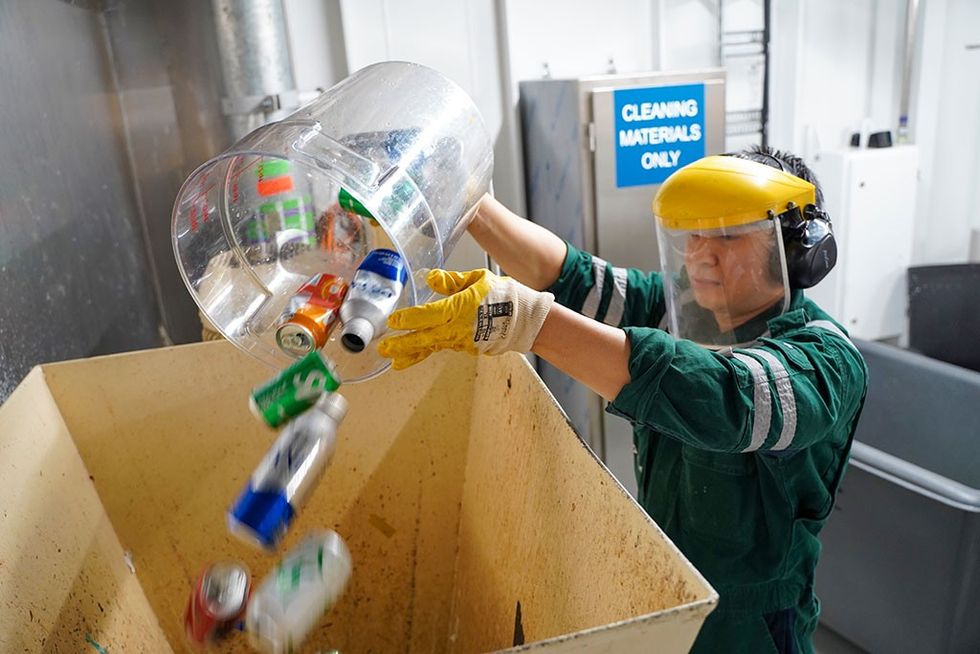
Significant progress has already been made. In 2018, Disney Cruise Line eliminated the use of plastic straws - an annual volume of more than 14.7 million. Additionally, by changing to refillable bath product dispensers in all guest staterooms in 2019, Disney Cruise Line has removed an annual distribution of more than 2.2 million plastic amenity containers across its fleet – a total of 18 tons of plastic waste. Disney Cruise Line has also gone from distributing nearly 1 million plastic merchandise bags fleetwide annually, to nearly zero.
Other measures include the removal of plastic cutlery, stirrers and condiment packets. Disposable polystyrene cups have been replaced with insulated paper cups. Plastic bottles were taken out and replaced with recyclable aluminum ones. Refillable water stations have been placed in both guest and crew member areas.
Plastic waste projects extend to live performances. More than 60 percent of all fabric used in “Disney The Little Mermaid” on the Disney Wish is made from recycled plastic fibre. The design team partnered with fabric technology experts and suppliers to produce custom made ocean-recycled textiles.
In addition, crew member costumes across the Disney Cruise Line fleet have already been replaced with fabrics made from recycled water bottles.
A consistent approach on plastics
Compagnoni says:
"We're really excited about this program because we think that this is really important. As a first step as we think about waste minimization, plastics is a perfect place to start. Especially in a maritime environment.
"As we think about what we've already been able to achieve with respect to eliminating plastic straws and single use plastics, targeting and replacing them with sustainable alternatives, we still want to continue to push what we've done on the ships to the island to have a consistent approach.
"We're really proud of this. And we'll continue to go ahead and look for opportunities to even get better at it."
Less waste for a more sustainable Disney Cruise
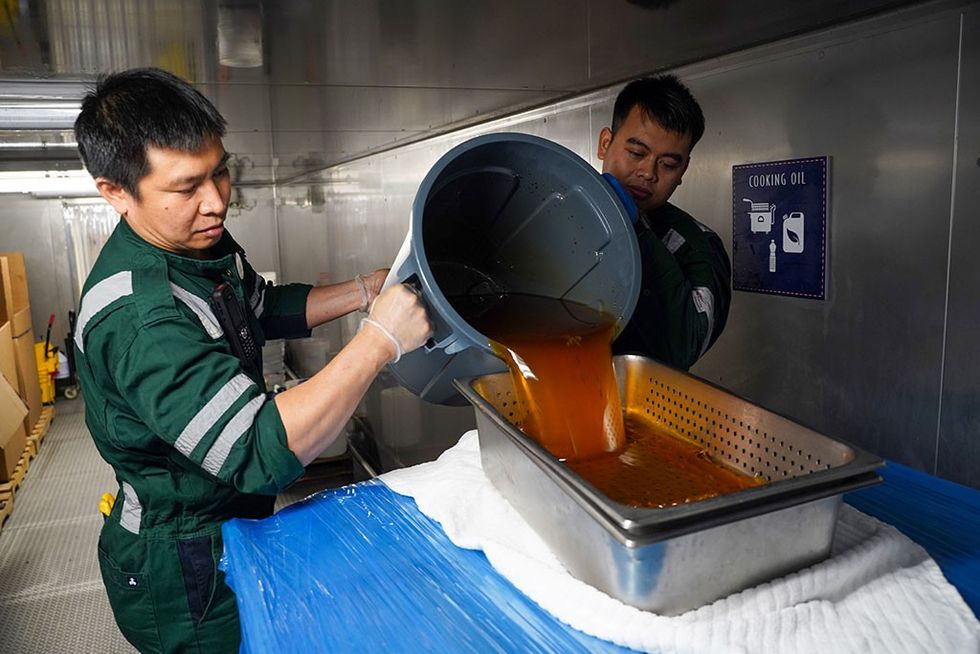
Another recycling initiative is DCL’s partnership with port communities across the globe. Used cooking oil is offloaded which is then repurposed into various other products and fuel sources.
In addition, water conservation projects include taking naturally occurring condensation from the air-conditioning units, and recycling to supply fresh water for onboard laundry and to clean the outer decks. This project saves around 7.5 million gallons of water each year.
Dedicated environmental officers
Teamwork, communication and leadership are vital to delivering a successful environmental strategy.
To ensure that sustainable strategies are at the core of the operation, Disney has appointed dedicated Environmental Officers to the cruise ships' senior leadership teams onboard. These officers are responsible for monitoring the ship’s water quality and supply and energy management systems. They also train fellow officers and crew and oversee environmental initiatives.
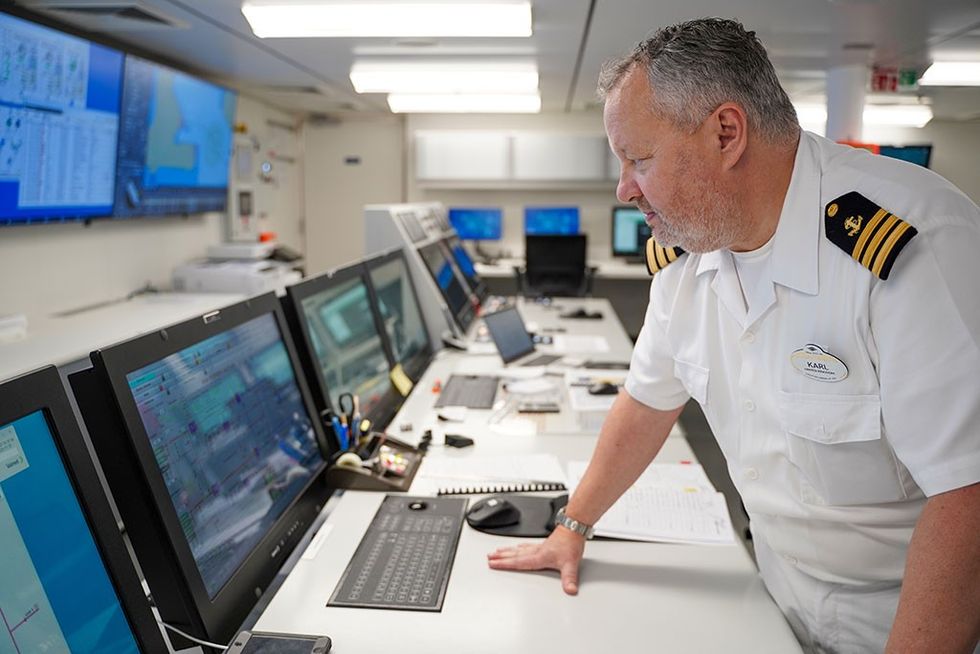
Compagnoni says: "We have a great team, and it is a tremendous team effort, not only the environmental officers and the ship team, but all the way from the captains throughout. They have a great influence on the rest of the organisation.
"But we also have a really strong tie to the shoreside management of the program so that we ensure that not only are we complying with the environmental regulations, but we're also bringing in the sustainability aspect of how we can go above what those requirements are. And then, as we think about crew engagement, we strive to get all of our crew aligned on what our environmental initiatives are.
Teamwork is key
"The other part is this collaboration, both internally with such a strong team at all levels of the company, and then externally with a lot of the specific subject matter experts. So it's a big effort, and at the same time, everybody's got their own unique kind of perspective on it. But it's been really great to focus them, focus the message and develop the strategy."
In terms of job satisfaction and recruitment Compagnoni adds: "I know that for my team I think that it’s not only energizing, but it's affirming that people want to work for a company that has these high standards and goals. And I think it also helps us from the sense of recruiting top talent."
Guest attitudes to sustainable Disney cruise initiatives
There is an opportunity for DCL to communicate to guests about the sustainability projects that the Company is working on. But how does DCL engage rather than lecture? And how much do guests want to know?
Whilst onboard, interested guests are able to watch a series of videos that highlight DCL’s initiatives to conserve water, minimize waste and increase fuel efficiency. Iconic Disney characters Timon and Pumbaa from “The Lion King” feature in the footage to inspire responsible environmental actions. They showcase small steps everyone can take to make a difference for the environment in their everyday lives.
Guests can also enjoy behind-the-scenes videos to show how DCL ships save energy, reduce emissions, conserve water and more.
Compagnoni says that these videos "give you a sense of how the environmental program works in practice on the ships.
"The feedback that we get from guests is supportive of the sustainability work. We get a lot of guest participation in the programs that have been active for many years on the ships. What we want to do is provide them with an opportunity to participate in the sustainability efforts of the company."
Sustainability participation for guests
"We give guests the opportunity to conserve water by reusing bath towels, similar to other programs in the industry. Because if we eliminate the laundry burden, that just eliminates the need for energy, reduces emissions and reduces waste water."
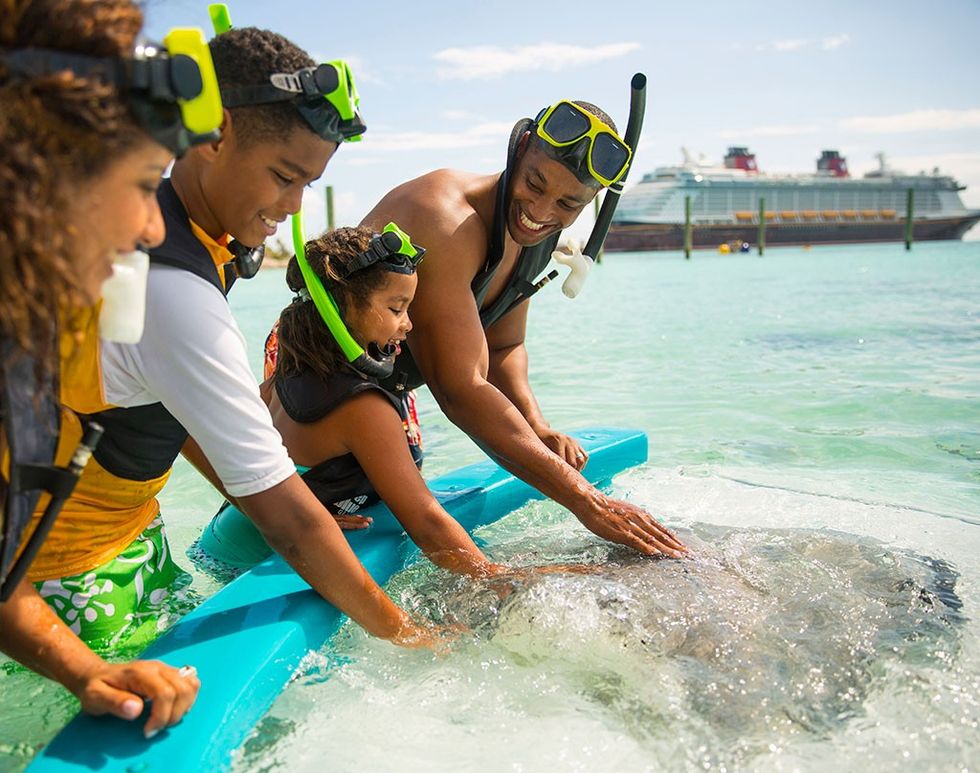
On Disney's private island, guests have the chance to take part in in fun learning activities. At Castaway Cay, the Stingray Encounter is a 60 minute, hands on training experience with live stingrays. This instructor-led educational program has been created through partnerships with animal care experts from Disney’s Animals, Science and Environment Team. It is one of the most popular Port Adventures.
The idea, Compagnoni says, is to allow guests to engage in a variety of different ways, “whether it's individual contribution [to the Disney Conservation Fund] or active participation in one of our biodiversity wildlife programs on the island."
Communicating about sustainability
We know that visitors are becoming more engaged with sustainability issues. More than ever, guests expect attractions to be taking climate action, including having a net zero plan. But how do you balance sustainability communications with delivering a care free holiday?
Compagnoni says:
"That's a good question, right? I think what we do is a really good job of informing and providing information. I think as time goes on, what we're going to see is people being more engaged all the time. And we'll have a consistent opportunity to continue to re-engage and inform at a greater cadence in the future. Because we've got a good strategy as we move forward."
And in terms of the perception of guests of Disney's environmental initiatives, Compagnoni thinks that: "in general the sustainability goals from the company, and then our initiatives that roll up under that, have been well received.
"We want, from a cruise line perspective, to be a leader as we move with the industry. So that's a significant area of focus for us. We're good with being a leader."
Images and video: Disney


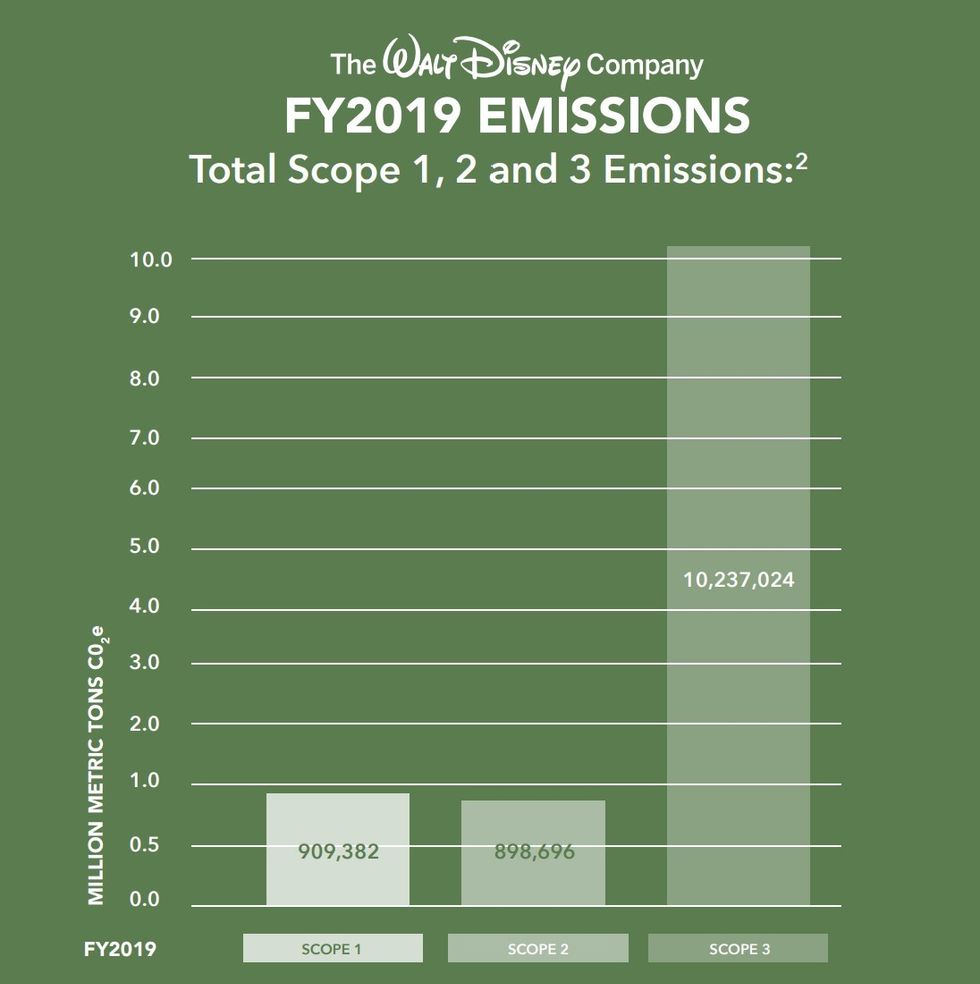
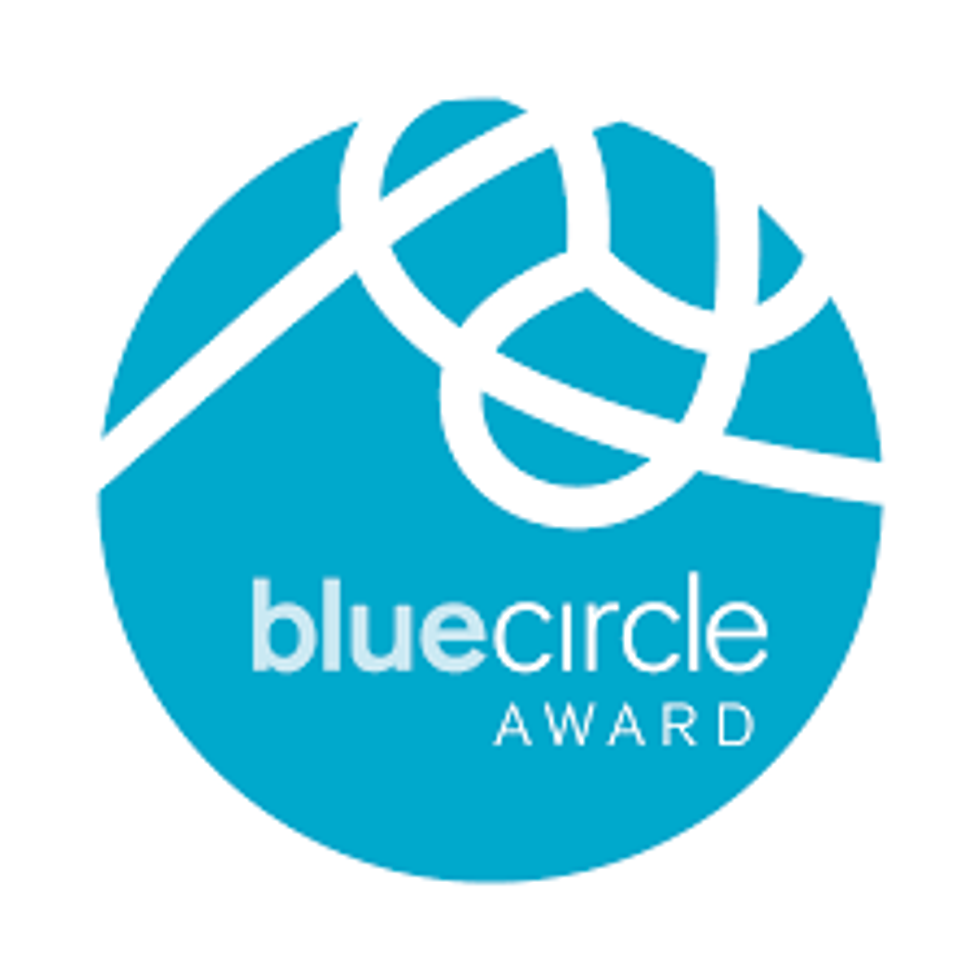


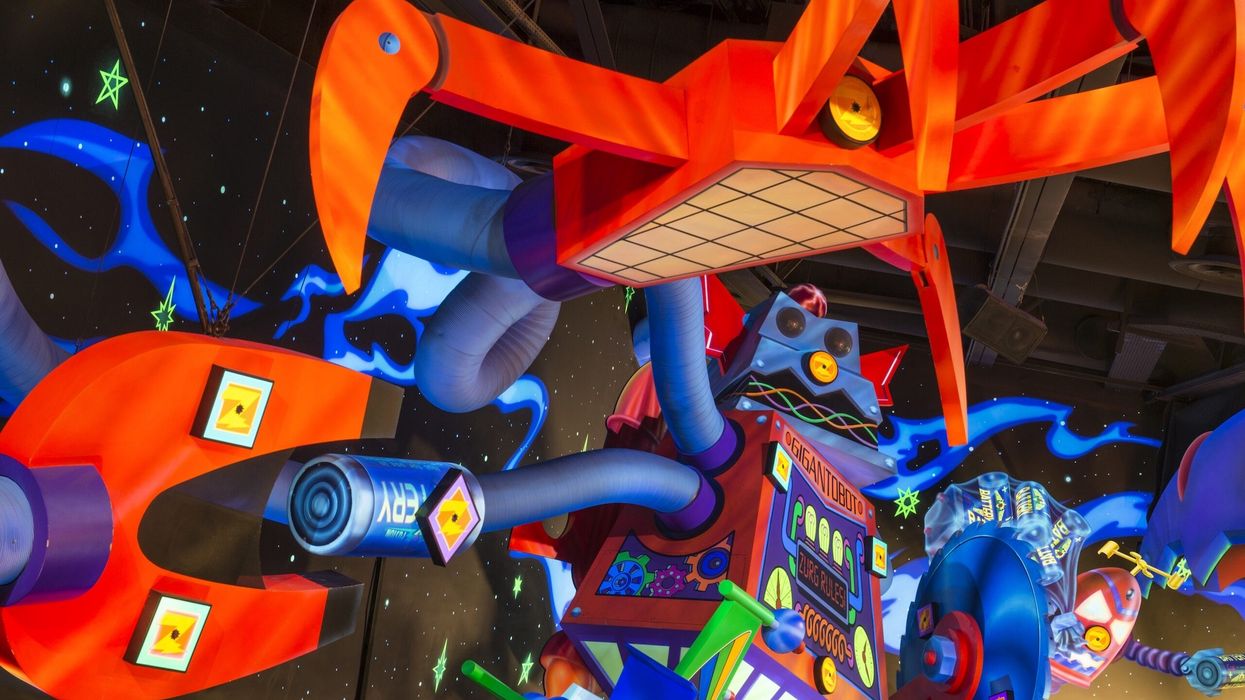
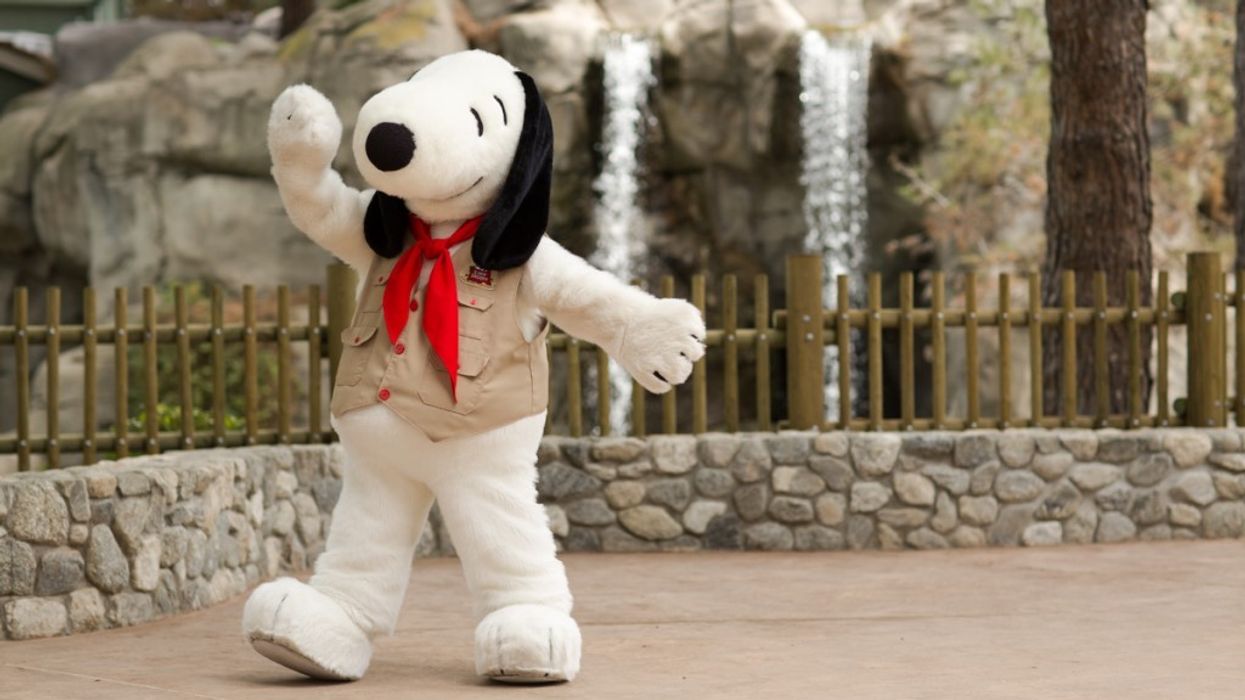

 TM Lim and Adam Wales
TM Lim and Adam Wales



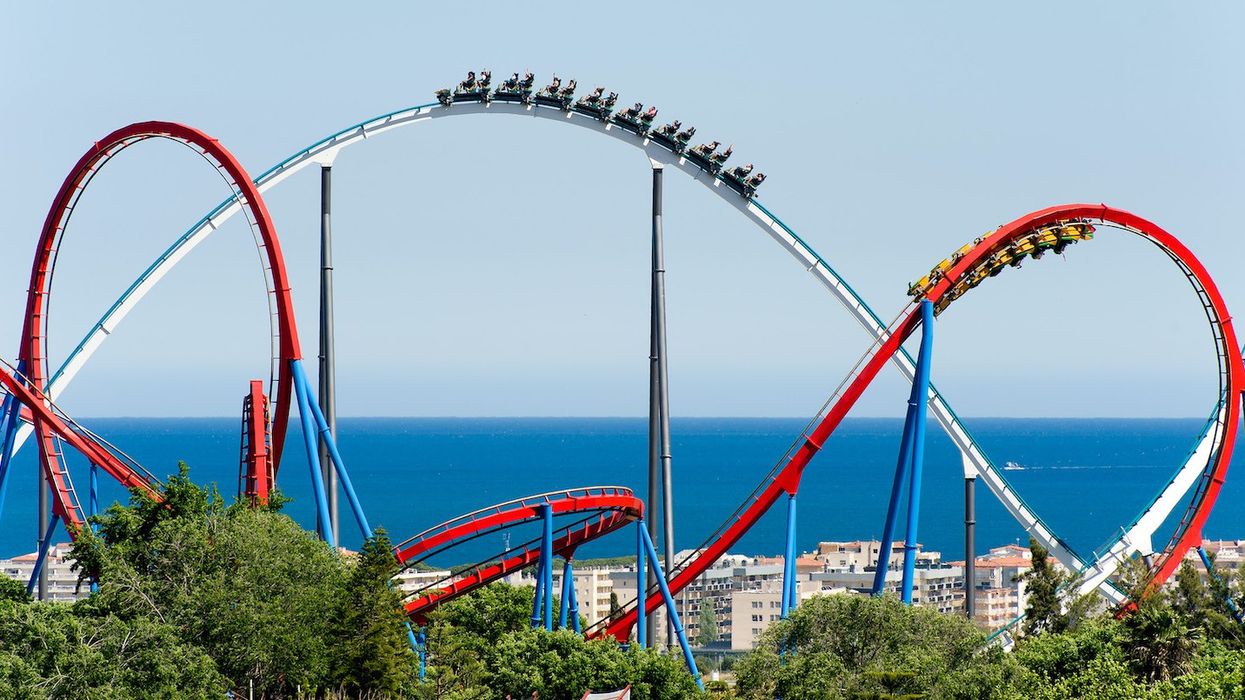


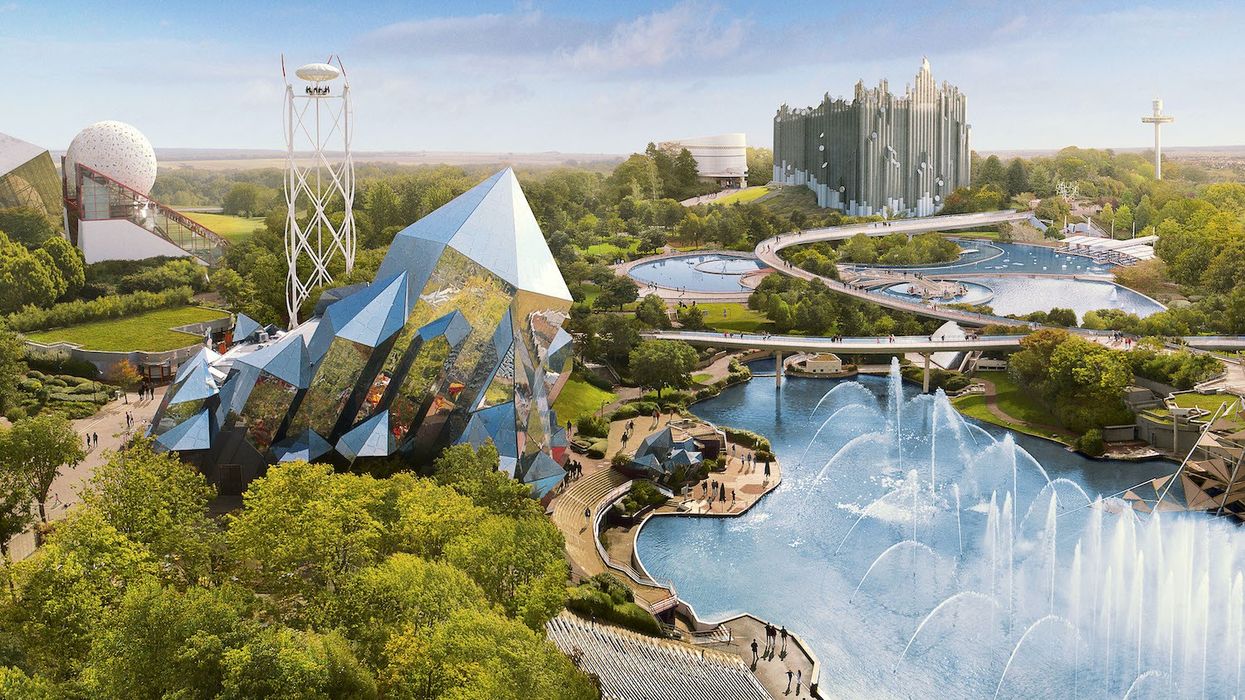


 Toby Harris
Toby Harris Hijingo
Hijingo Flight Club, Washington D.C.
Flight Club, Washington D.C.
 Flight Club Philadelphia
Flight Club Philadelphia Flight Club Philadelphia
Flight Club Philadelphia Bounce
Bounce Hijingo
Hijingo Bounce
Bounce
 Fernando Eiroa
Fernando Eiroa











 Nickelodeon Land at Parque de Atracciones de Madrid
Nickelodeon Land at Parque de Atracciones de Madrid Raging Waters
Raging Waters  Mirabilandia's iSpeed coaster
Mirabilandia's iSpeed coaster Parque de Atracciones de Madrid
Parque de Atracciones de Madrid Ferracci at the ribbon-cutting ceremony for Nickelodeon Land at Mirabilandia, with (left) Marie Marks, senior VP of global experiences for Paramount and (cutting the ribbon) Sabrina Mangina, GM at Mirabilandia
Ferracci at the ribbon-cutting ceremony for Nickelodeon Land at Mirabilandia, with (left) Marie Marks, senior VP of global experiences for Paramount and (cutting the ribbon) Sabrina Mangina, GM at Mirabilandia Tropical Islands OHANA hotel
Tropical Islands OHANA hotel Elephants at Blackpool Zoo
Elephants at Blackpool Zoo  Tusenfryd
Tusenfryd
 Andrew Thomas, Jason Aldous and Rik Athorne
Andrew Thomas, Jason Aldous and Rik Athorne







